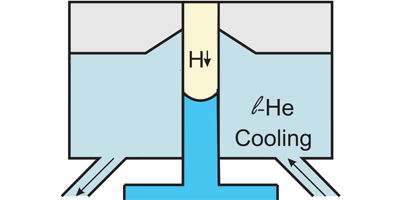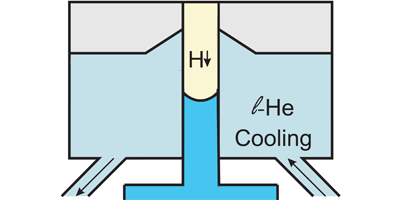Catching the Electron Spin Wave
A magnetically polarized ultracold gas can mimic the behavior of a magnetic solid, including excitations, such as spin waves. Such cold-atom systems could allow researchers to create condensates of spin waves. Writing in Physical Review Letters, Otto Vainio at the University of Turku, Finland, and colleagues report a step in this direction by showing they are able to manipulate electron spin waves in a dense, polarized hydrogen gas.
In quantum gases, which are much more dilute and weakly interacting compared to solids, the dominant source of spin waves is identical spin rotation (ISR), an effect that causes a spin to rotate about the spin of its neighbor. ISR comes into play when the de Broglie wavelength of an atom exceeds the range of the interatomic potential, and it is largest for gases that are in the quantum regime but not yet degenerate.
Prior to Vainio et al.’s work, ISR had been observed to excite nuclear spin waves in an electron-spin-polarized gas, but not pure electron spin waves. Vainio et al. studied compressed spin-polarized hydrogen confined between a Fabry-Pérot resonator and superfluid helium. Using electron-spin resonance, they detected two types of electron spin-wave excitations: traveling modes, which they channeled with a cylindrical spin waveguide; and confined modes, which they trapped in a magnetic potential well.
Engineering statistical correlations between such trapped spin waves could, according to the authors, lead to Bose-Einstein condensation, and spin superfluidity. – Daniel Ucko





